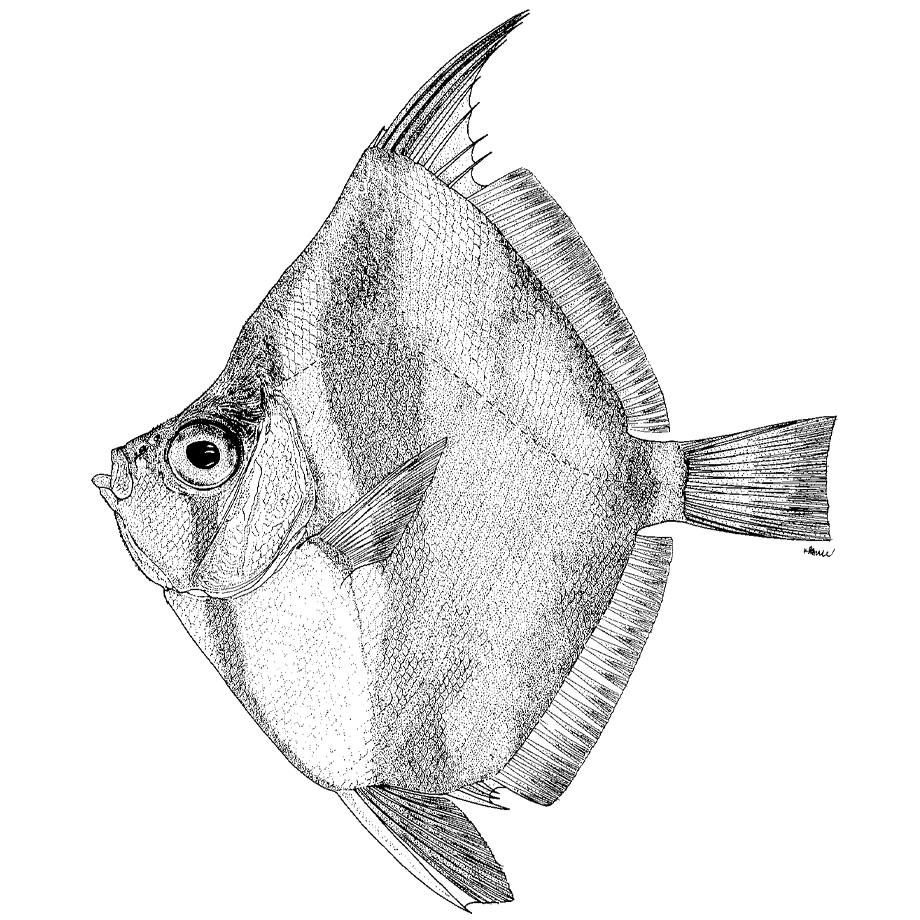Scientific illustration: an art in the service of science
“Scientific illustration is the accurate depiction of objects and concepts in the biological and physical sciences,” says Elaine R.S. Hodges, a distinguished scientific illustrator at the Smithsonian National Museum of Natural History. In other words, scientific illustration can be described as art in the service of science (Male, 2007; Marques, 2017).
|
|
This is what Ms. Emanuela D’Antoni has been doing at her work as a scientific illustrator at FAO for the past 37 years. During that time, Emanuela has produced thousands of scientific illustrations of aquatic animals, ranging from the minute painted harlequin shrimp to the gigantic whale shark, making her one of the most successful scientific illustrators of our time. Her beautiful, and most importantly, scientifically accurate drawings have been prepared in close cooperation with world-known experts of different taxonomic groups, where her contribution has served as a basis for various scientific products developed by FAO Species Identification and Data Programme (now FAO FishFinder) since mid-80s.
Emanuela’s work combines a multitude of skills (artistic, technical, scientific) and rigorous work procedures derived from decades of experience in her profession. Along with showing a sensitivity to the anatomy of the subject and finding the best ways to present it, Emanuela is equipped with a robust scientific knowledge acquired through the constant study of monographs, scientific papers and other publications dealing with the original description, ecology and anatomy of the taxa, being the object of her drawings.
The most tangible and visible results of Emanuela’s work are depicted through FAO species identification publications. These include 32 global species catalogues of groups of commercially important marine resources, seven multivolume regional species guides, 22 national field guides to commercial marine resources, 15 pocket/on board guides, and six posters. Most of these species identification tools required black-and-white artwork, noting their species defining characteristics, but some also included striking full-colour illustrations.
Emanuela’s work has undoubtedly contributed to upgrading the world’s fishery data and aquatic biodiversity knowledge. Her work, reflected through FAO’s publications, has made science readily available and easily understandable to several generations of fishery workers and taxonomists around the globe, especially in developing countries. It is not unusual to find FAO species identification guides well-kept and cherished by Fisheries Officers from the Pacific Islands to inland fisheries of Africa.
This month Emanuela will retire. The entire Fisheries Division at FAO headquarters in Rome is celebrating the achievements of this outstanding scientific illustrator, by naming a new fish species in her honour. The fish, discovered during a recent EAF-Nansen Programme survey in Myanmar, is of extreme beauty and evolutionary success that Emanuela has herself skilfully offered FAO and the fisheries community in each and every one of her magnificent drawings.



